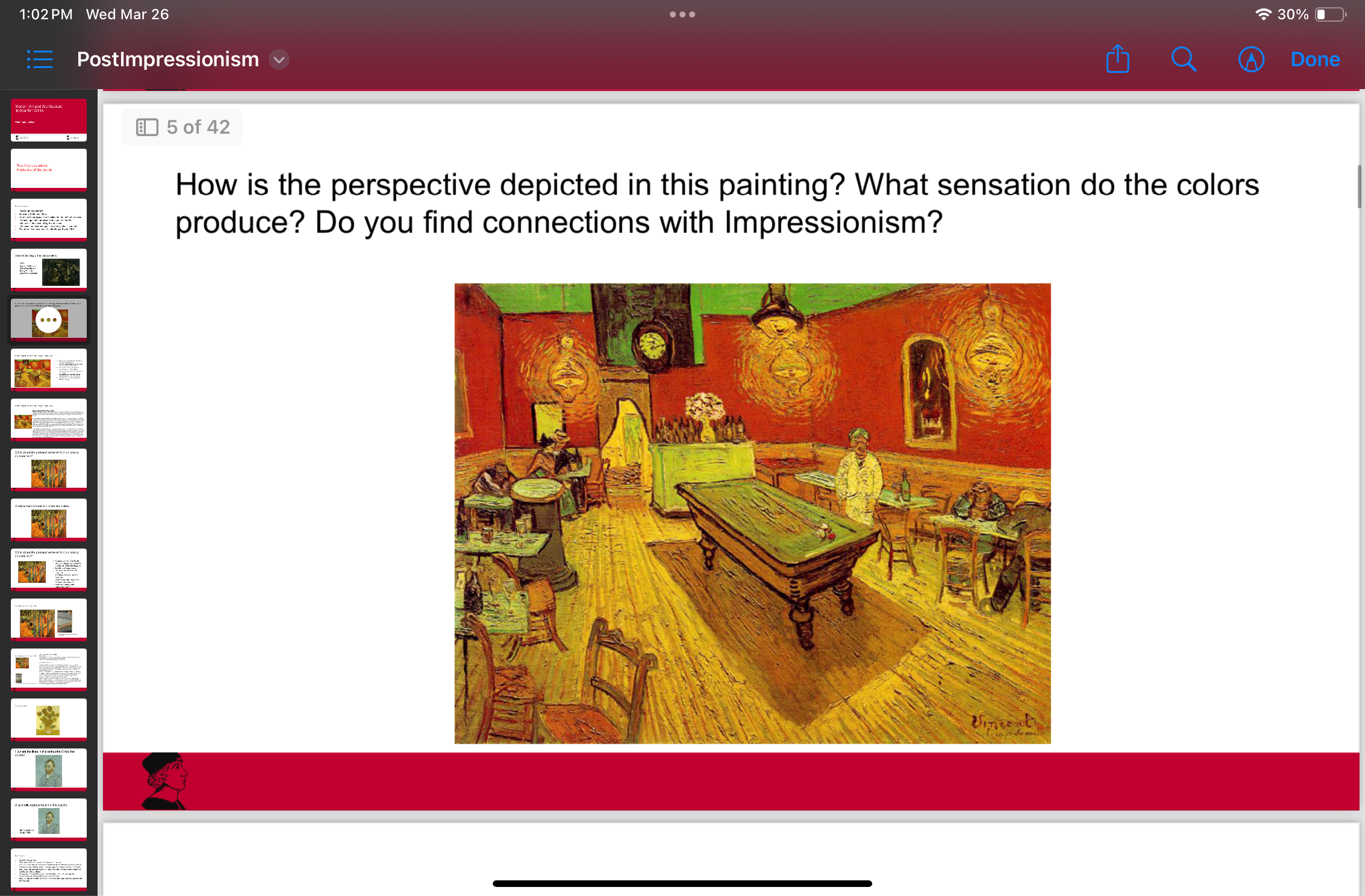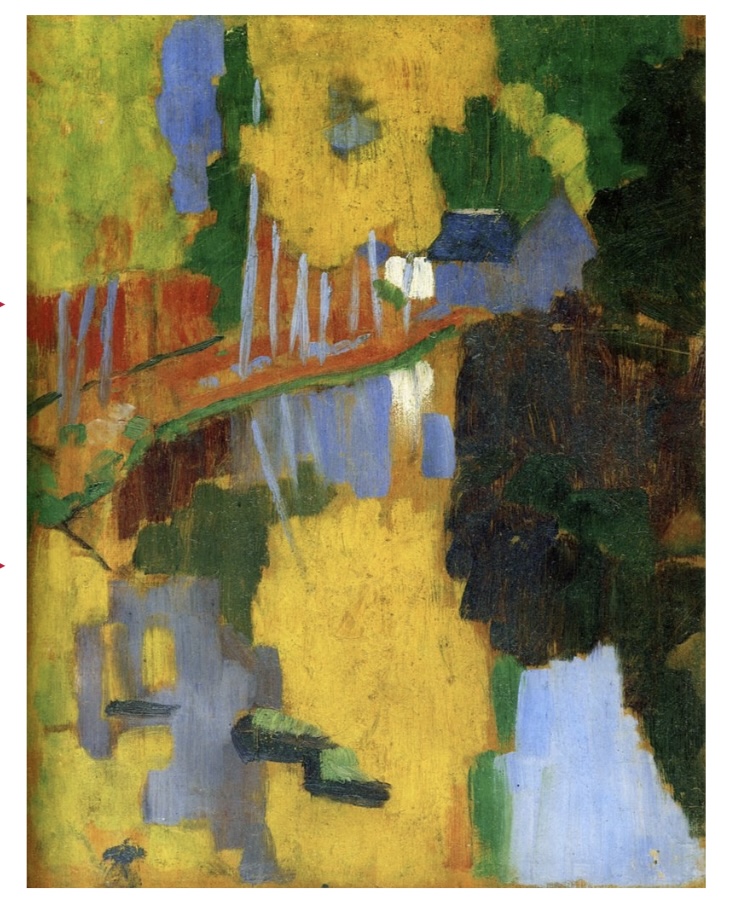Van gogh
1/29
There's no tags or description
Looks like no tags are added yet.
Name | Mastery | Learn | Test | Matching | Spaced |
|---|
No study sessions yet.
30 Terms
Post-Impressionism
A French art movement from 1886 to 1905, reacting against Impressionism by focusing on abstract qualities and symbolic content.
Vincent Van Gogh
A post-Impressionist painter known for his vivid colors and emotional honesty, famous works include 'The Potato Eaters' and 'Cafe at Night'.

Cafe at night
An 1888 painting by Vincent Van Gogh, characterized by unstable perspective and vibrant, expressive colors.
Paul Cézanne
A post-Impressionist artist known for his methodical brushstrokes and focus on the structure of objects, often depicting them from multiple viewpoints.
Chiaroscuro
A technique used in art to represent light and shadow, particularly associated with Caravaggio.
Fauvism
An early 20th-century art movement led by Henri Matisse that emphasized bold colors and brushwork.
Cubism
An art movement pioneered by Picasso and Braque that involves abstracting forms into geometric shapes and presenting multiple perspectives within a single artwork.
Symbolism
An artistic movement seeking to represent ideas and emotions through symbolic imagery rather than realistic depiction.

The Talisman
A 1888 painting by Paul Sérusier that exemplifies the use of color in post-Impressionism, articulated through a conversation with Gauguin.
Avant-garde
Innovative and experimental art and ideas that push the boundaries of what is accepted as the norm, often associated with significant movements such as Cubism and Fauvism.
The Starry Night
An iconic painting by Vincent Van Gogh, showcasing a swirling night sky over a quiet town, created in 1889.
Les Demoiselles d'Avignon
A groundbreaking painting by Pablo Picasso from 1907, considered a precursor to Cubism, depicting five women in a brothel.
The Scream
An expressionist painting by Edvard Munch, created in 1893, symbolizing modern existential angst.
Composition VII
A complex abstract work by Wassily Kandinsky, created in 1913, exemplifying the use of color and form to evoke emotions.
Water Lilies Series
A series of approximately 250 oil paintings by Claude Monet, created between 1896 and 1926, focusing on his flower garden in Giverny.
The Kiss
An iconic work by Gustav Klimt, painted in 1907-1908, known for its ornate use of gold leaf and intimate subject matter.
Guernica
A powerful anti-war mural by Pablo Picasso, created in response to the Spanish Civil War, completed in 1937.
The Persistence of Memory
A 1931 surrealist painting by Salvador Dalí, featuring melting clocks in a dream-like landscape.
American Gothic
A painting by Grant Wood, completed in 1930, depicting a farmer and his daughter in front of a rural American home.
The Birth of Venus
A famous painting by Sandro Botticelli from the 1480s, illustrating the goddess Venus emerging from the sea.
The Mona Lisa
A famous portrait by Leonardo da Vinci, created in the early 1500s, known for her enigmatic smile.
The Creation of Adam
A fresco by Michelangelo on the ceiling of the Sistine Chapel, depicting God giving life to Adam.
The Night Watch
A large painting by Rembrandt from 1642, known for its dynamic composition and use of light.
The Birth of Venus
A renowned work by Sandro Botticelli, illustrating the goddess Venus emerging from the sea.
Girl with a Pearl Earring
A 17th-century painting by Johannes Vermeer, often referred to as the 'Mona Lisa of the North.'
Las Meninas
A 1656 painting by Diego Velázquez, featuring a complex composition of figures and perspective.
Campbell's Soup Cans
A series of artworks by Andy Warhol from the 1960s, reflecting pop art's focus on consumer goods.
Guernica
A powerful anti-war mural by Pablo Picasso, created in 1937, depicting the horrors of war.
The Last Supper
A mural painting by Leonardo da Vinci, capturing the moment Jesus announces his betrayal.
The Persistence of Memory
A surrealist painting by Salvador Dalí, known for its depiction of melting clocks and dream-like scenes.